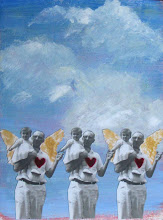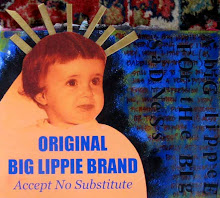
Though he was a friend and artistic contemporary of my beloved Vincent, no matter how much I try, I just can't get into the work of Emile Bernard. I think it might be because so much of it is virtually identical in style and subject to Gauguin's work and we all know how I feel about that. When I look at most of Bernard's canvases, all I see is Gauguin. Vincent was so smitten with Bernard's brush that he not only made copies of his friend's works, but in letters to Theo he implored his brother to promote Bernard's new style of art. This, I guess, shouldn't be surprising as Vincent also thought Gauguin was brilliant. Uh-hunh. At any rate, this is one of the few pieces of Emile Bernard that I really do like. A lot. The juxtaposition between the field of green and the boy's fiery red hair is beautiful, and startling. Its simplicity is a joy. And oh yeah, it looks nothing like a Gauguin.
Boy Sitting in the Grass, 1886










